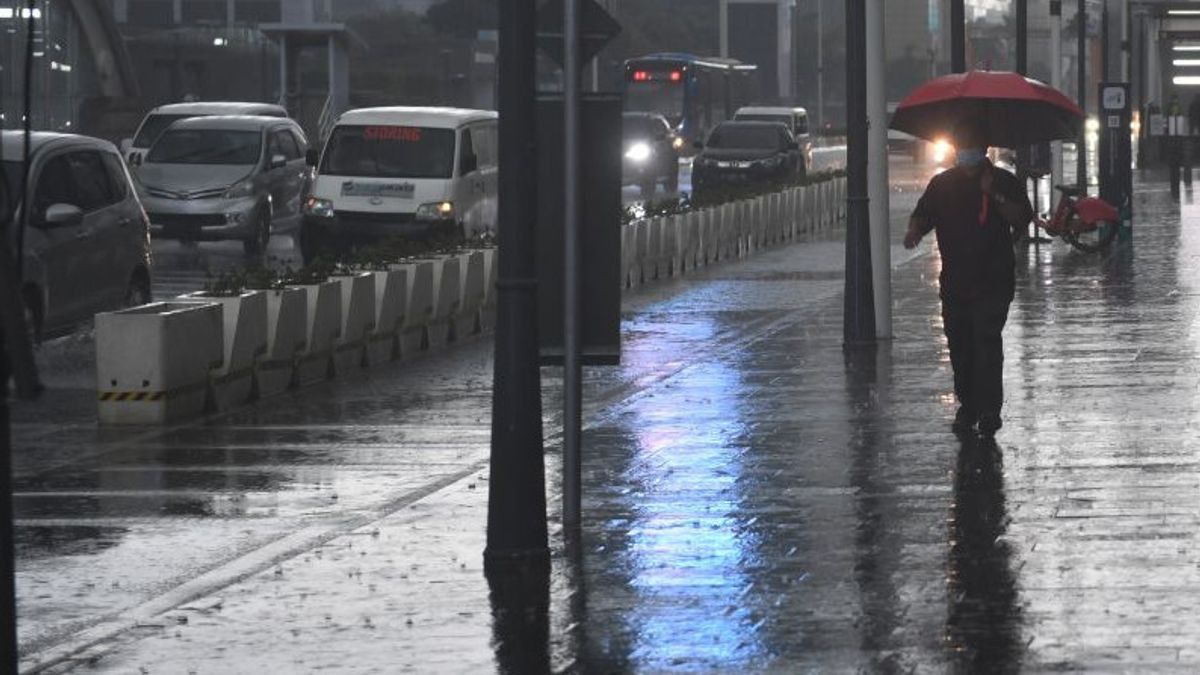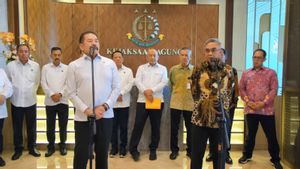JAKARTA - In Indonesia, the potential for natural disasters that continues to increase is always associated with weather and environmental factors. Big waves in the sea that go wrong with bad weather, retreating coastlines, wrong tides, rising sea levels are wrong for global warming.
Flash floods and landslides are responsible for heavy rains and extreme weather. Long drought is blamed as a result of global warming.
Should nature always be blamed for all natural disasters, which claimed many lives? Earth's temperature is indeed rising. It must be admitted that there was human intervention, and this triggered the hydrometeorological disaster.
Natural disasters that arise due to the impact of meteorology or weather such as rainfall, humidity, wind and temperature are hydrometeorological disasters. Hydrometeorological disasters cause forest fires, land droughts, floods, landslides, hurricanes, high waves and heat waves.

In a press release in Jakarta, Friday March 1, 2022, Acting Head of the Center for Disaster Data, Information and Communication of the National Disaster Management Agency (BNPB) Abdul Muhari stated that Indonesia had experienced 1,137 disasters. The disaster was dominated by floods, landslides, and extreme weather until March 2022.
There are seven provinces with the highest disaster rate, with the category of hydrometeorological disasters in the first three months of this year. The seven provinces are Aceh, West Sumatra, West Java, Central Java, East Java, South Kalimantan and South Sulawesi. The record of disasters that have occurred has been consistent for the last five years, from 2017 to 2022.
Cities and regencies in West Java are the ones most frequently affected by hydrometeorological disasters.
"The hydrometeorological disasters in Indonesia, in the last five years, have been dominated by the island of Java and half of them have been in West Java," said Muhari.
Based on BNPB data for the years 2011-2021, in the last ten years, natural disasters in Indonesia have experienced a sharp increase. With a total of 24,270 disasters, which were dominated by hydrometeorological disasters.
March AnomalyThe total disaster in March 2021 is bigger than March 2022, but the number of victims of this year's disaster is bigger. A total of 29 people died in March 2022, compared with 17 in March 2021. This is because in March, in West Sumatra, an earthquake occurred with a fairly large impact and also increased flooding.
BNPB noted that this year there were 163 flood disasters in 27 provinces in 107 regencies/cities. A total of 151,255 houses were submerged, 16 people died, 3 people were declared missing, and 507,253 people were forced to evacuate.
The flood disaster in March 2022 was caused by the influence of La Nina, which has occurred since 2021. Basically every March some parts of Indonesia enter a transition period, with high rainfall intensity with short duration. But what is happening at this time, rain with high intensity is still happening. As happened in Sangatta, East Kalimantan, which resulted in a catastrophic flood.

"This indicates that we have to look at the current environmental conditions," Muhari continued.
According to Muhari, rivers or mountains are water reservoirs. Siltation and narrowing of rivers should be a concern for areas prone to hydrometeorological disasters
BNPB also reminded, entering the month of April people to anticipate extreme weather, including strong winds without rain and tornadoes. The public is expected to monitor the weather forecast more often
Cyclone SeedsMeanwhile, separately, in a press release, the Deputy for Meteorology, Meteorology and Geophysics Agency (BMKG) warned that the presence of 93W tropical cyclone seeds in mainland Vietnam was observed. The cyclone was accompanied by a wind speed of 25 knots and an air pressure of 106 mb, which could trigger a tropical depression in Indonesian territory.
Tropical cyclones are a major activity of clouds, wind, storms, and lightning. The energy source of tropical cyclones comes from water vapor that condenses at high altitudes.

Seeds of tropical cyclones were also detected in the Indian Ocean west of Australia. The wind speed is estimated at 20 knots and the air pressure is 100 mb. Tropical cyclone seeds will form wind confluence on the west coast of Bengkulu, to the southern waters of Banten and West Java.
With the monitoring of these tropical cyclone seeds, cloud concentration was detected extending across Aceh, from Riau to Jambi, Lampung, southern West Java, Central Java, East Java, Central Kalimantan, North Kalimantan, central and southern Sulawesi, NTB, Maluku, West Papua. , and Papua. This situation increases the growth of rain clouds in the tropical cyclone spawn area, throughout the area.
Restore Natural ImmunityWahyudi Siswoyo, Researcher of the ITS Center for Earth, Disaster, and Climate Change Studies, in his article "The Indonesian Hydrometeorological Disaster" wrote, actually nature has its own immunity to face various disaster threats. In its own way, it can reduce the level of natural risk.
Like mangroves that can withstand high tides and storms, even tsunamis. The coastal swamp area can accommodate flood inundation and tidal flooding.
The problems of natural disasters such as floods, droughts, landslides, river silting can be minimized and even avoided with vegetation, especially in shelter areas. Forests are also water reservoirs which also function to maintain water availability. However, this effort will be in vain, especially in the long term, if the damage to water reservoirs and coastal areas is only left unchecked.
The English, Chinese, Japanese, Arabic, and French versions are automatically generated by the AI. So there may still be inaccuracies in translating, please always see Indonesian as our main language. (system supported by DigitalSiber.id)









